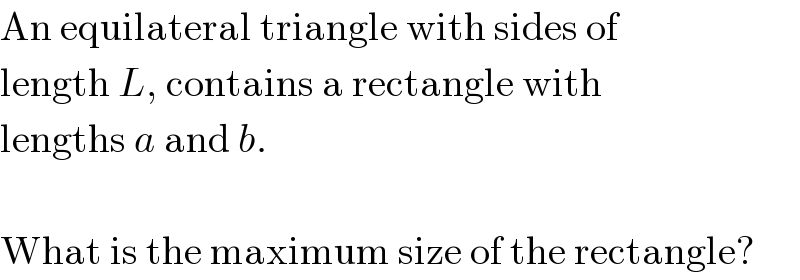
Question Number 5410 by FilupSmith last updated on 14/May/16

Commented by FilupSmith last updated on 14/May/16

$$\mathrm{An}\:\mathrm{equilateral}\:\mathrm{triangle}\:\mathrm{with}\:\mathrm{sides}\:\mathrm{of} \\ $$$$\mathrm{length}\:{L},\:\mathrm{contains}\:\mathrm{a}\:\mathrm{rectangle}\:\mathrm{with} \\ $$$$\mathrm{lengths}\:{a}\:\mathrm{and}\:{b}. \\ $$$$ \\ $$$$\mathrm{What}\:\mathrm{is}\:\mathrm{the}\:\mathrm{maximum}\:\mathrm{size}\:\mathrm{of}\:\mathrm{the}\:\mathrm{rectangle}? \\ $$
Commented by Rasheed Soomro last updated on 14/May/16

$$\mathrm{When}\:{a}={b}\:,\:\mathrm{i}-\mathrm{e}\:\mathrm{when}\:\mathrm{rectangle}\:\mathrm{is}\:\mathrm{square}. \\ $$
